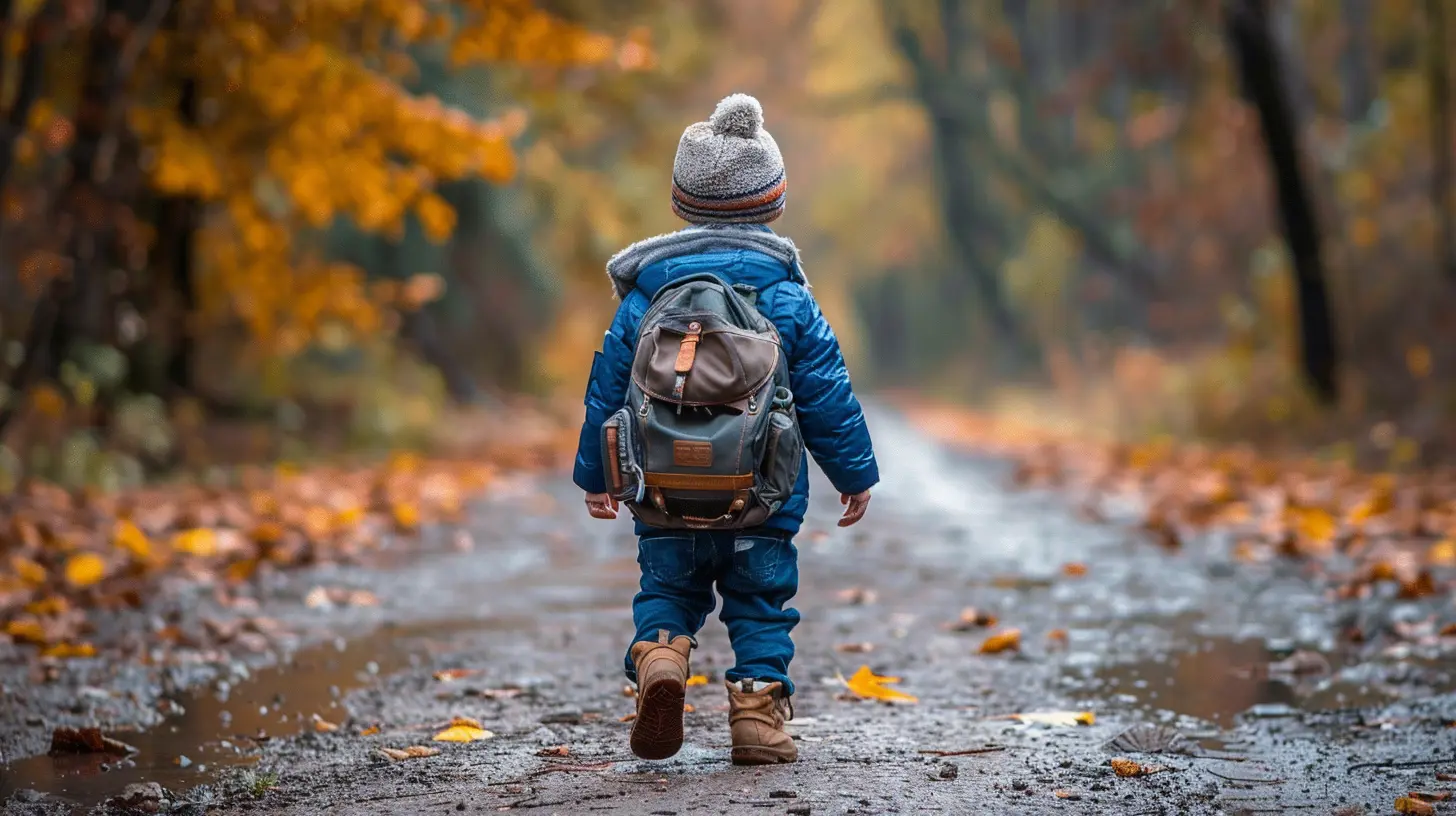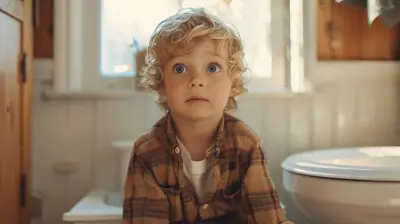Setting Clear Goals for Your Child's First School Year
17 September 2025
The backpack is zipped. The lunchbox is packed. Tiny shoes are laced with love (and maybe a splash of nervousness). Your little one is about to step into a world of chalkboards, backpacks, storybooks, and endless curiosity. It’s the first school year—the beginning of a lifelong learning journey.
But here's the thing: just like you wouldn’t head out on a road trip without a destination in mind, you shouldn't send your child into their first school year without clear, intentional goals.
Let’s talk about setting clear goals for your child’s first school year—because when you know where you’re headed, every step feels more purposeful.
Why Goal-Setting Matters: More Than Just a To-Do List
Think of goals like a compass for your child’s school year. They point your child in the right direction and help them stay grounded amid the chaos of crayons, classroom rules, and capital letters.But it’s not just about academics. Setting goals sharpens focus, builds confidence, and teaches your child that progress is a journey—not a one-time thing.
And for you, dear parent, goals serve as a gentle reminder that you’re not just watching from the sidelines—you’re part of the game. You’re the coach in the bleachers, the cheerleader, the planner, and the heart that keeps it all going.
Start With the Heart: Emotional and Social Goals
Before we dive into ABCs and 123s, let’s pause and look at the heartbeat of early education—emotional and social learning.1. Confidence in the Classroom
Going to school, especially for the first time, can feel like being dropped into a jungle without a map. One minute your child is the captain of the living room fort, the next they’re one of twenty tiny humans in a sea of new faces.Set a goal that helps your child feel safe and sure of themselves:
- Goal: “I want my child to feel confident speaking up in class, even if it’s just to ask a question.”
- How to support: Practice small conversations at home. Role-play classroom scenarios. Celebrate their courage, not just results.
2. Friendship Basics
Let’s face it—friendships are tricky, even for adults. For little learners, mastering the art of sharing, taking turns, and saying "I’m sorry" is like learning emotional algebra.Set this as an early goal:
- Goal: “I want my child to make at least one meaningful friendship this year.”
- How to support: Talk about kindness. Teach empathy through storybooks. Encourage playdates and listen to their playground tales.
Cognitive Goals: Little Brains, Big Potential
Now that the roots are strong, let’s help those academic branches grow. But spoiler alert: it’s not about turning your child into the next Einstein. It’s about setting age-appropriate milestones that spark joy, curiosity, and consistency.3. Reading Readiness
Not every child will read fluently by the end of kindergarten, and that’s okay. What matters is building a love for books.- Goal: “I want my child to recognize basic sight words and enjoy being read to.”
- Tips: Read nightly. Use voices. Visit the library. Let them pick silly books—whatever gets the pages turning.
4. Number Sense – The Building Blocks of Math
Counting. Sorting. Recognizing patterns. These simple skills pack a punch later on.- Goal: “I want my child to count to 20, identify basic shapes, and understand one-to-one correspondence.”
- Tips: Use household items for learning. Count stairs. Play sorting games with snacks (cereal math, anyone?).
Independence Milestones: Letting Go Without Losing Touch
The first school year is also a crash course in independence—for both of you.5. Self-Care Skills
Imagine your child needing help tying shoes, opening their lunch, or asking to use the bathroom—and the teacher is juggling twenty others. Yikes, right?- Goal: “I want my child to handle basic self-care tasks on their own.”
- Tips: Practice at home. Make it fun. Use routines to build habits (like a “morning check-in” chart).
6. Time Management Basics
Yes, even kindergartners can learn time skills. Not telling time on a clock, but understanding the rhythm of the day.- Goal: “I want my child to follow a routine and transition from one activity to another without meltdowns.”
- Tips: Use songs to signal activities. Create visual schedules. Reinforce consistency.
Communication Goals: Finding Their Voice
Being able to express needs, ask questions, or just share a story is a superpower.7. Speaking Clearly and Listening Actively
Kids don't need perfect grammar—they need to be understood and to understand others.- Goal: “I want my child to share ideas clearly and listen when others speak.”
- Tips: Practice storytelling. Ask open-ended questions. Model good conversation (and no, that doesn’t mean always having the right answer).
Emotional Regulation: Handling Big Feelings in Little Bodies
Let’s be honest—school can be a rollercoaster. One minute your child’s all smiles; the next, a storm of tears.8. Recognizing and Managing Emotions
Teaching your child to name their feelings is the first step towards managing them.- Goal: “I want my child to learn how to express emotions without acting out.”
- Tips: Use feeling charts. Read books about emotions. Practice deep breathing together.
Parent-Teacher Partnership: The Secret Sauce
This isn’t just your child's journey—it’s yours too. Teachers aren’t mind readers. They rely on you for insight, support, and collaboration.9. Open Communication with Educators
Think of your child’s teacher as your co-pilot.- Goal: “I want to foster a strong, respectful relationship with my child’s teacher.”
- Tips: Attend conferences. Send notes. Ask for feedback. Say thank you, often.
Celebrating Progress, Not Perfection
Sometimes the biggest growth can’t be measured in report card boxes.Maybe your child didn’t master every letter, but they learned to sit quietly during story time. That’s a win. Maybe they didn’t make a ton of friends, but they offered a toy to a classmate. Another win.
Keep a journal, take photos, ask your child to draw their favorite part of the day. Celebrate the little victories—they’re the foundation of tomorrow’s confidence.
Let’s Put It All Together: A Sample Goal-Setting Map
Here’s a simple, no-fuss way to organize your child’s first school year goals:| Category | Goal Example | How to Support |
|----------------------|--------------------------------------------------|-------------------------------------------|
| Emotional/Social | Build confidence speaking in class | Role-play scenarios at home |
| Academic | Count to 20 & recognize sight words | Use games, books, and everyday moments |
| Independence | Dress self and manage lunch routine | Practice with real-life examples |
| Communication | Answer questions in full sentences | Encourage storytelling |
| Emotional Regulation | Use words to express feelings | Use feeling charts and calming techniques |
| Parent Involvement | Communicate monthly with the teacher | Attend meetings, write notes |
Final Thoughts: Goals Are Just the Beginning
Think of this first school year not as a race, but as a garden. You’re planting seeds of learning, growth, confidence, and connection. Some will sprout quickly; others need time, sunlight, and a little patience.Set those goals. Revisit them often. Adjust when needed. And most of all—enjoy the ride.
Because this year? It’s not just your child growing. You’re growing, too.
Quick Tips for Parents: Goal-Setting Do’s and Don’ts
Do:- Write goals down
- Involve your child (even in small ways)
- Celebrate progress regularly
- Stay flexible
Don’t:
- Compare your child to others
- Set unrealistic expectations
- Stress over minor setbacks
- Forget to enjoy the journey
Ready, Set, Grow!
So, let’s lace up those little shoes with hope. Pack the lunchbox with love. And fill your child’s backpack with something even more powerful than pencils and paper—purpose.Because when you set clear goals for your child’s first school year, you're not just guiding them; you're walking alongside them on a path of discovery, resilience, and wonder.
And that, dear parent, is the most beautiful journey of all.
all images in this post were generated using AI tools
Category:
School ReadinessAuthor:

Max Shaffer
Discussion
rate this article
1 comments
Zedric Matthews
This article beautifully captures the essence of setting clear goals for our little ones as they embark on their school journey. Your insights remind us that each small step lays the foundation for their future. Thank you for inspiring us to support our children with intention and love!
September 21, 2025 at 3:41 AM


